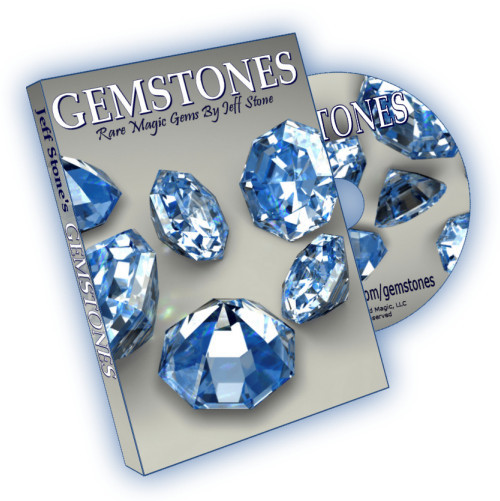SCMCR
Introduction
I hate the multiple card revelation effect. In my mind, there are several problems with it. First, the selection process takes too long. Then the “losing” the cards takes too long. Then finally, after “finding” the first few cards, they know what’s coming.
I’ve seen many people (some more successfully than others) attempt to solve pieces of the problems. I’ve never found one that I felt solved everything. What I’m about to offer, also does not solve everything. In fact, the idea has never been tested, but it seems sound to me, and it solves two and a half of the three problems. It’s a simple solution. For those of you who like the MCR effect, give this a try.
Advanced Selection
Rather than waiting until it’s time to do the routine to have the cards selected, have them selected in advance. While you’re doing your show, assuming you use cards, the spectators will be handling cards. Whether it’s a selection, a mystery card, a couple of Kings for a sandwich routine, the four Aces, etc., the spectators are handling cards. Rather than putting the four Aces or two Kings, or whatever back in the pack after the effect, ask various spectators to hold on to the cards for the “Big Finish.”
This saves a ton of time in two ways. First, it normally takes time to put the Kings or Aces or whatever back in the deck, so you save a few seconds there. But, of course, the big savings is at the end during the MCR routine. You don’t have to have a single card selected for this routine, because they’ve been in the possession of the spectators the entire time.
So to be clear, let’s say you’re working a group of 7 people. You do a sandwich routine which involves two Kings and a selection (let’s say 5 of Diamonds). When the trick is over, don’t put the 5 or the Kings back in the deck. Rather, let the person who selected the 5 hang on to it. Then give one of the Kings to “Bob” and the other one to “Jill” as you tell them to hold on to them until the end.
Let them know that you’ll need them for the grand finale. This will build suspense and mystery. Next up, you perform an Ace Assembly (yuck). At the end, give an Ace to “Judy”, “Billy”, “Jack” and “Doug.” You’ve done two card tricks, and already 7 people have a card for the big finish. This speeds things up, builds suspense and is much more efficient. Also, if your card set involves more cards than this, feel free to have spectators hang on to more than one card.
One Control
When you’re done with your set of card effects and you’re ready for the grand finale, build it up. Tell everyone to take a good look at their card again and remember it. Then rather than taking the cards back and controlling them one at a time, fan the deck out and place the selections up-jogged in different parts of the fan. Square up and perform Marlo’s Super Simple Multiple Shift — I believe that’s the name of it.
This is a simple method to control all 7 (or however many) cards to the top (or bottom) of the deck all at once. With that done, you’ve take little time at all to get where you need to be. You didn’t have to bother at all with a selection process. Further, you didn’t really have to bother with taking the cards back. You just quickly up-jogged their cards so that they could “get one last look.” Two seconds later the cards are “lost” in the deck and you’re in the position you need to be to begin the revelations. Now you can go right into your revelations with a much more attentive audience.
One at a Time? No!
Finally, we come to the climax and most important part of the routine, the revelations. In my mind, the secret here is to build. Make each revelation more visible and/or more impossible seeming. That’s tip #1. Tip #2 is use revelations that reveal more than one card at the same time.
With a smaller group, this may not be needed, but if you have 10 or more selections, doing more than one selection at a time can save you time, and it often looks more flashy and more difficult. For example, you could use the classic revelation where you hold the deck and toss it from one hand to the other causing the top and bottom card to remain behind in your hand as the deck is tossed to the other hand.
Lastly, as a shameless plug, I’ll recommend my effect Triptych from my Gemstones DVD as a solution to quickly finding three selections. Further, from the same DVD, All Four One can also be adapted to the MCR routine allowing you to quickly find four selections.
In a routine like this, it’s more important than ever to look for time savers that won’t compromise the impact of the effect. I think the ideas offered here fit that bill. If you implement any of these ideas, please post a comment below to let us know how it went. Until Next Month . . .

